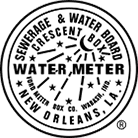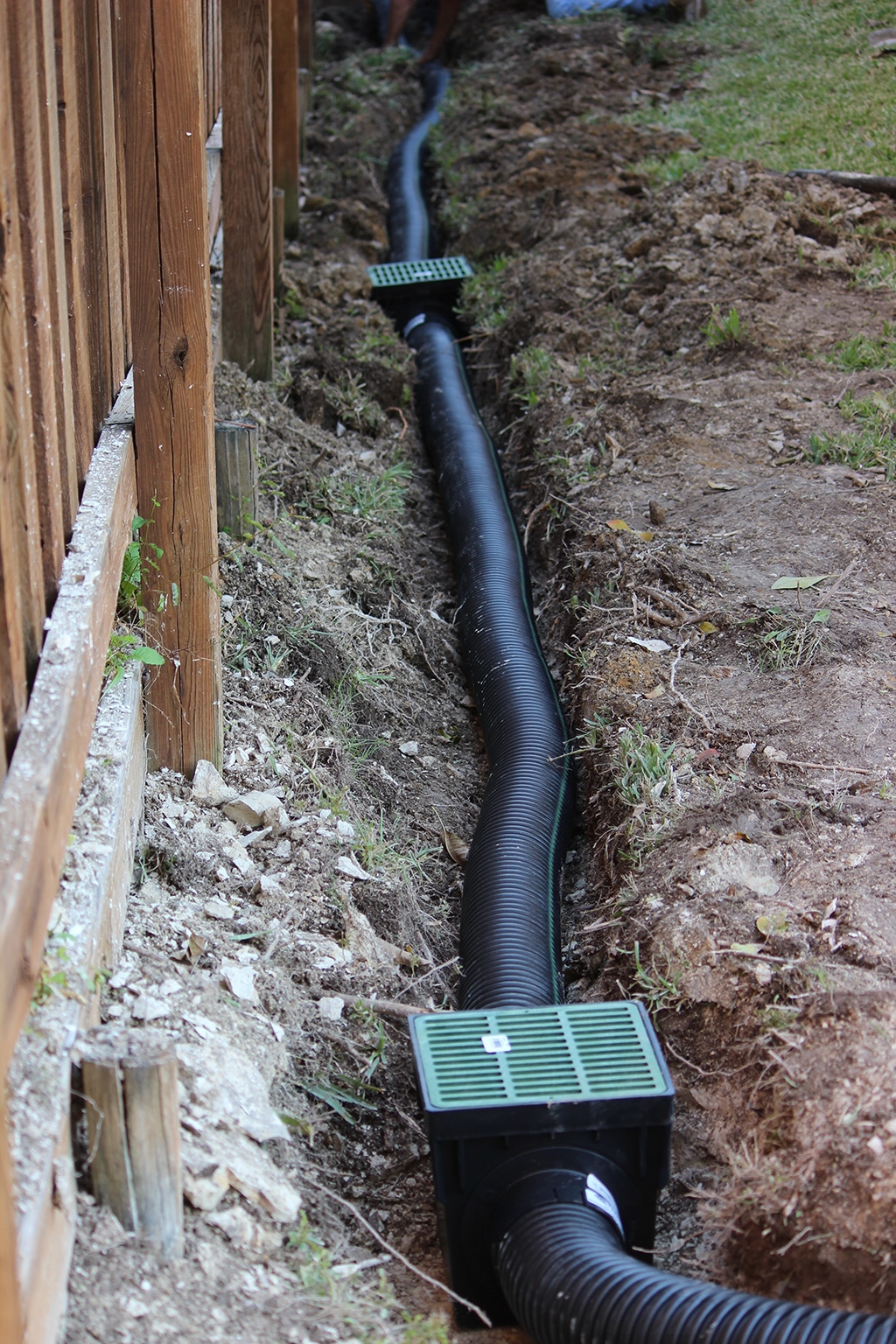
French Drains: What You Need to Know for Your Home
French drains could be the solution you’ve been searching for. Excess water in your yard can lead to numerous issues, including foundation damage, flooded basements, and erosion. French drains offer an efficient and cost-effective way to redirect water away from problem areas, ensuring your property remains dry and stable.
This comprehensive guide will explore everything you need to know about French drains, from their history and benefits to the step-by-step process of installing one in your home.
What is a French Drain?
A French drain is a simple yet effective drainage system designed to redirect surface water and groundwater away from specific areas. But what exactly is it, and how does it work? Let’s dive into the details.
History and Origin
The concept of the French drain dates back to the mid-19th century and is attributed to Henry Flagg French, a lawyer and Assistant U.S. Treasury Secretary from Concord, Massachusetts. He popularized this drainage method in his 1859 book “Farm Drainage,” which detailed various techniques for improving farm and garden drainage.
Despite its name, the French drain isn’t from France but is named after Henry French. This system has since evolved and remains a popular solution for managing water drainage in residential and commercial properties.
Benefits of French Drains
French drains offer several advantages for homeowners and property managers. Here are some key benefits:
- Prevents Water Damage: By redirecting water away from your home, French drains help prevent water damage to your foundation, basement, and landscape.
- Reduces Soil Erosion: They help control soil erosion by managing the flow of water across your property.
- Improves Yard Aesthetics: By eliminating water pooling and soggy spots, French drains can enhance the appearance and usability of your yard.
- Increases Property Value: Proper drainage solutions can increase the value of your property by preventing potential water-related issues.
How French Drains Work
French drains are composed of a trench filled with gravel or rock, containing a perforated pipe that redirects water away from the problem area. Here’s a basic breakdown of how they function:
- Water Collection: Surface water or groundwater seeps into the trench through the gravel.
- Water Redirection: The perforated pipe within the trench collects the water and channels it away from your home or problem area.
- Water Discharge: The collected water is then discharged at a safe distance from your home, typically into a drainage ditch, dry well, or storm drain.
Types of French Drains
Understanding the different types of French drains is crucial for selecting the best solution for your drainage issues. Each type serves a specific purpose and is suited for particular scenarios.
Interior French Drains
Interior French drains are installed inside the home, typically along the perimeter of the basement floor. They are designed to prevent basement flooding by collecting water that seeps through the foundation walls or floor and directing it to a sump pump, which then expels the water outside.
- Best For Homes with basements prone to flooding or dampness.
- Installation: Involves digging a trench around the perimeter of the basement, laying perforated pipe, and covering it with gravel and concrete.
Exterior French Drains
Exterior French drains are installed outside the home, near the foundation. They are used to prevent water from entering the basement by intercepting it before it reaches the foundation walls.
- Best For Homes with significant yard drainage issues or basements that experience frequent leaks.
- Installation: Involves digging a trench around the home’s exterior, laying perforated pipe, and covering it with gravel. The trench is then covered with soil or landscaping material.
Curtain Drains
Curtain drains are a type of exterior French drain installed further away from the foundation. They are used to intercept and redirect surface water before it reaches problem areas.
- Best For Properties with a high water table or significant surface water issues.
- Installation: Similar to exterior French drains, but positioned further from the home and often shallower.
Comparison of Types
Choosing the right type of French drain depends on your specific drainage problems and the layout of your property. Here’s a quick comparison:
- Interior French Drains: Best for direct basement water issues.
- Exterior French Drains: Effective for preventing water from reaching the foundation.
- Curtain Drains: Ideal for managing surface water over a larger area.
Each type has its unique benefits and installation considerations. Assessing your property’s needs will help you determine the most appropriate solution.
Planning Your French Drain Installation
Before you start digging, it’s essential to plan your French drain installation carefully. Proper planning ensures the drain will be effective and compliant with local regulations.
Assessing Your Yard
The first step in planning your French drain is to assess your yard. Identify areas where water tends to pool or where the ground remains soggy after rain. These problem areas are prime candidates for a French drain. Consider factors such as the slope of your yard, the location of existing landscaping, and the proximity to your home’s foundation.
Identify Low Spots
Look for depressions in your yard where water collects. These are key areas that will benefit most from improved drainage.
Check Slope
Ensure the slope of the drain will facilitate water flow away from problem areas. A slight downward gradient is necessary for effective water movement.
Locate Utilities
Before digging, contact your local utility companies to mark any underground lines. This step prevents potential damage and ensures safety during the installation process.
Identifying Problem Areas
Pinpointing specific areas where drainage issues occur is crucial. Common problem areas include basements with water seepage, yards with poor drainage causing water to pool, and driveways with low spots where water accumulates. Understanding the source and flow of the water will help you design an effective drainage system tailored to your needs.
Legal Considerations and Permits
Installing a French drain may require permits and adherence to local regulations. Check with your local building department to determine the requirements for your area. Some municipalities require permits for excavation and drainage work.
Additionally, ensure the drain does not encroach on property lines or easements, and comply with any regulations regarding water discharge and environmental impact. Being aware of these legal considerations can prevent future complications and ensure your project proceeds smoothly.
Materials and Tools Needed
Gathering the right materials and tools is crucial for a successful installation. Essential materials include perforated drain pipe, gravel or crushed stone (typically ¾ inch in size), landscape fabric to line the trench, pipe connectors for connecting sections of pipe, and a drainage outlet such as a dry well or storm drain. Recommended tools include a shovel for digging the trench, a trenching spade for precision digging, a level to ensure proper slope, a wheelbarrow for moving gravel and soil, and a pipe cutter for cutting the drain pipe.
Cost Estimation
Estimating the cost of installing a French drain involves considering materials, labor, and potential permit fees. Material costs vary depending on the type and quantity needed. If hiring a contractor, labor costs can significantly increase the overall expense. Permit fees depend on local regulations. By planning thoroughly, you can ensure a successful French drain installation that addresses your drainage issues effectively and within budget.
Step-by-Step Guide to Installing a French Drain
Installing a French drain requires careful planning and execution. This step-by-step guide will help you through the process from start to finish.
Preparing the Site
Before you begin digging, it’s essential to prepare the site properly. Start by marking the path of your French drain using stakes and string. This will serve as a guide to ensure a straight trench. Next, remove any obstacles such as plants, rocks, or debris from the path. This will make digging easier and more efficient.
Marking the Path
Use stakes and string to outline where the trench will be. Ensure the path leads away from the problematic area to an appropriate drainage outlet.
Clearing Obstacles
Remove plants, rocks, and other debris from the marked path. This will prevent interruptions during digging.
Digging the Trench
The next step is to dig the trench. The depth and width of the trench depend on the severity of your drainage problem and the type of French drain you are installing.
Trench Dimensions
For most French drains, a trench about 18 to 24 inches deep and 12 inches wide is sufficient. However, adjust the dimensions based on your specific needs.
Using Proper Tools
Utilize a shovel and trenching spade for this task. Make sure the trench has a slight downward slope to facilitate water flow.
Lining the Trench with Fabric
Once the trench is dug, line it with landscape fabric. This fabric prevents soil and roots from clogging the drain, ensuring long-term functionality.
Installing Fabric
Lay the fabric along the bottom and sides of the trench, leaving excess fabric at the top edges. This will allow you to fold it over the gravel later.
Securing the Fabric
Use landscape staples to hold the fabric in place. This step ensures the fabric remains steady while you add gravel and pipe.
Adding Gravel
After lining the trench with fabric, add a layer of gravel. This base layer helps with drainage and supports the perforated pipe.
Gravel Layer
Add about 2 to 3 inches of gravel at the bottom of the trench. Spread it evenly to create a stable base for the pipe.
Choosing Gravel
Opt for gravel or crushed stone that is roughly ¾ inch in size. This size allows water to flow freely through the spaces between the stones.
Laying the Drain Pipe
Now it’s time to lay the perforated drain pipe on top of the gravel layer.
Types of Pipes
You can choose between PVC and flexible drain pipes. PVC pipes are more rigid and durable, while flexible pipes are easier to install in curved trenches.
Proper Placement
Ensure the perforated holes in the pipe face downward. This position allows water to enter the pipe from below and be carried away efficiently.
Connecting Pipes
If you need multiple sections of pipe, use connectors to join them securely. Ensure there are no gaps where soil can enter the pipe.
Filling the Trench
Once the pipe is laid, add more gravel to cover it. Fold the excess fabric over the gravel and finish filling the trench.
Adding More Gravel
Cover the pipe with at least 6 inches of gravel. This layer helps filter water into the pipe while keeping soil out.
Folding the Fabric
Fold the excess landscape fabric over the top layer of gravel. This step adds an extra barrier to prevent soil from clogging the drain.
Final Fill
Complete the fill with soil or decorative rock. If using soil, make sure it is compacted well to prevent settling.
Connecting to a Drainage Outlet
The final step is to connect the French drain to a suitable drainage outlet. This outlet ensures the water collected by the drain is discharged safely away from your property.
Options for Drainage Outlets
Common options include dry wells, storm drains, and drainage ditches. Choose the one that best suits your property’s layout and local regulations.
Ensuring Proper Flow
Ensure the entire system has a consistent downward slope towards the outlet. This ensures efficient water flow and prevents backflow issues.
Avoiding Common Mistakes
Be mindful of common mistakes such as insufficient slope, improper pipe placement, and inadequate trench depth. These errors can compromise the effectiveness of your French drain.
Maintenance of French Drains
Proper maintenance of your French drain ensures its longevity and effectiveness in managing water drainage. Regular inspection and timely fixes can prevent common issues and keep your system functioning well.
Regular Inspection Tips
Regularly inspecting your French drain can help you identify potential problems before they become serious. It’s a good practice to inspect your drain at least twice a year, preferably during the spring and fall when heavy rainfall is more likely.
Visual Inspection
Start with a visual inspection of the drain outlet and surrounding areas. Look for signs of water pooling, erosion, or unusual vegetation growth, which might indicate a blockage or malfunction.
Check for Clogs
Inspect the drain pipe openings and clean out any debris that might have accumulated. Leaves, dirt, and other debris can block the pipe and hinder water flow.
Assessing Gravel and Fabric
Check the gravel layer for any signs of compaction or soil intrusion. If the landscape fabric is visible, ensure it’s intact and not exposed, as this could allow soil to clog the system.
Common Issues and Fixes
Even with regular maintenance, French drains can encounter problems. Knowing the common issues and how to fix them can save you time and money.
Clogs
Clogs are the most common problem with French drains. They can occur when soil, roots, or debris enter the pipe or the gravel layer. To fix a clog, you may need to flush the pipe with water or use a plumber’s snake to clear the blockage.
Erosion
Erosion around the drain outlet or along the trench can undermine the drain’s effectiveness. Adding more gravel or reinforcing the trench with additional landscape fabric can help prevent further erosion.
Collapsed Pipe
If the drain pipe collapses, it can block water flow and require replacement. This issue is more common with flexible pipes. If you encounter this problem, consider using more durable PVC pipes as a replacement.
Long-term Maintenance Plans
To ensure your French drain continues to function effectively over the long term, establish a maintenance plan. This plan should include regular inspections, prompt fixes for any issues, and periodic updates or upgrades as needed.
Seasonal Maintenance
In addition to biannual inspections, consider seasonal maintenance tasks. For example, in the fall, remove fallen leaves and debris from the drain area to prevent clogs. In the spring, check for any damage caused by winter weather and make necessary repairs.
Professional Check-ups
Consider having a professional inspect your French drain system every few years. A professional can provide a more thorough inspection and identify issues you might miss.
Upgrades and Improvements
As your landscape and drainage needs evolve, you may need to upgrade or modify your French drain. For example, adding additional gravel or extending the drain to new problem areas can improve its effectiveness.
FAQs
1. What is a French drain, and how does it work?
A French drain is a trench filled with gravel or rock containing a perforated pipe that redirects surface and groundwater away from an area. Water seeps into the trench, enters the pipe through its perforations and is then carried away to a safe discharge point, such as a drainage ditch or dry well.
2. How do I know if I need a French drain?
If you experience water pooling in your yard, basement flooding, or erosion issues, a French drain might be needed. It’s also beneficial if your property has poor natural drainage or a high water table. Regular wet spots after rain or persistent dampness in your basement are strong indicators.
3. Can I install a French drain myself?
Yes, you can install a French drain yourself if you have basic DIY skills and the necessary tools. However, complex drainage issues or properties with challenging landscapes may require professional installation to ensure effectiveness and durability.
4. How long does a French drain last?
With proper installation and maintenance, a French drain can last 30 to 40 years. Regular inspections and maintenance, such as clearing debris and ensuring proper flow, can help prolong its lifespan.
Have you ever faced drainage issues in your yard or home? Share your experiences and solutions in the comments below!













